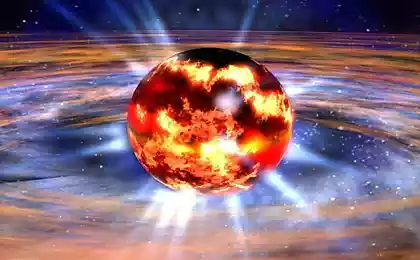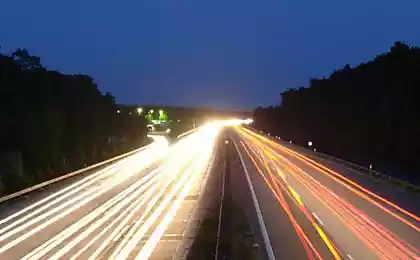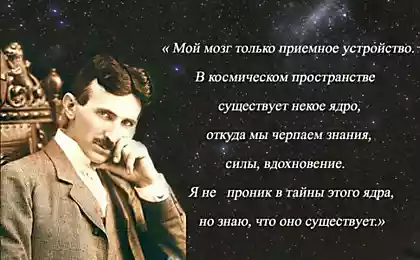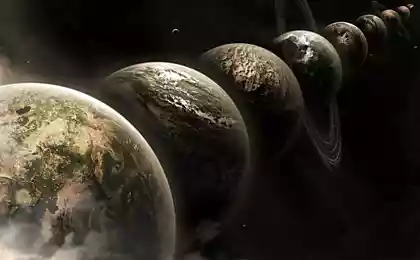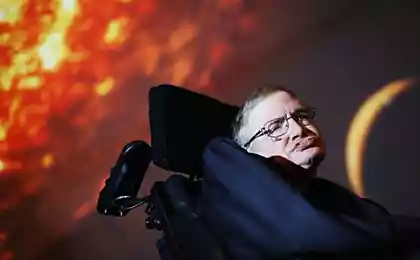696
The fastest stars in the Universe can dial the speed of light
Eighty seven million six hundred fifty thousand seven hundred eight
Our Sun revolves around the center of the milky Way at a speed of 724 000 kilometers per hour. Recently, scientists have discovered stars that are rushing out of our galaxy at a speed of more than 1 500 000 km/h. Can a star move even faster?
After some calculations, Harvard University astrophysicists AVI Loeb and James Gilson realized that Yes, the stars can move faster. Much faster. According to their analysis, stars can reach the speed of light. The results are purely theoretical, so no one knows if this is what can happen while astronomers do not fix these superfast stars — which, according to Loeb, it will be possible with the telescopes of the next generation.
But speed is not all that will be given to the astronomers once detected. If these superfast stars will still be found, they will help to understand the evolution of the Universe. In particular, to give scientists another tool to measure the speed of expansion of space. In addition, says Loeb, under certain conditions on the orbit of such stars may be planet travelling through the galaxy. And if such planets will have life, they could move it from one galaxy to another. Agree, interesting arguments.
It all began in 2005, when it was discovered the star, which sought away from our galaxy so fast that it could leave the gravitational field of the milky Way. During the following years, astronomers were able to discover several stars that have become known as ultra-high-speed star (hypervelocity stars). These stars were ejected supermassive black hole in the center of the milky Way. When a pair of stars orbiting around each other, coming close to the Central black hole, which weighs millions of times more than the Sun, the three objects engage in a gravitational dance short, in which one star is ejected. The other remains in orbit around the black hole.
Loeb and Wilson realized that if, instead, you will have two supermassive black holes on the verge of crashing and the star that revolves around a single black hole, the gravitational interactions could catapult the star into intergalactic space at speeds of hundreds of times the speed of the bullet stars. The analysis was published in the journal Physical Review Letters.
According to Loeb, this is the most likely scenario, in which may appear the fastest stars in the Universe. In the end, supermassive black holes collide more often than you think. Almost all galaxies have supermassive black holes at the centers and nearly all galaxies were the result of a merger of two smaller galaxies. When the galaxies combine and Central black holes.
Loeb and Wilson calculated that merging supermassive black holes would have to throw stars with a wide range of speeds. A few of them would reach relativistic speeds, but the rest would be dispersed sufficiently. For example, Loeb says, the observable Universe can be more than a trillion stars which move with a speed of 1/10 of light, that is about 107 000 000 kilometers per hour.
Since the motion of a single isolated star through intergalactic space would be rather dull, only powerful future telescopes like the space telescope James Webb, is scheduled to launch in 2018, will be able to detect them. Yes, and it is likely that such telescopes can only see stars that have reached our galactic surroundings. Most of the ejected stars probably formed near the centers of galaxies and was thrown out shortly after his birth. This means that they have been travelling for most of their life time. In this case, the age of the star is approximately equal to the time that travels star. By combining the travel time with the measured speed, astronomers can determine the distance from the home galaxy to our galactic surroundings.
If astronomers can find stars that have been ejected from a galaxy at different times, they will be able to use them to measure the distance to that galaxy at different points in the past. Looking at how the distance varied with time, it will be possible to determine how fast the universe is expanding.

Two merging galaxies
From ultra fast wandering stars could be another application. When supermassive black holes collide with one another, they create ripples in space and time, gravitational waves, which reflect the intimate details of merging black holes. ELISA space telescope, scheduled for launch in 2028, will detect gravitational waves. As superfast stars are formed when black holes here-here will merge, they will be the kind of signal that will indicate eLISA to possible sources of gravitational waves.
The existence of such stars is one of the most striking signals that the two supermassive black holes are at the verge of a merger, says astrophysicist Enrico Ramirez-Ruiz University of California, Santa Cruz. Although they can be difficult to detect, they will introduce a fundamentally new tool for studying the Universe.
In 4 billion years our milky Way will collide with the Andromeda galaxy. Two supermassive black holes at their centers will merge, and stars can also be thrown away. Our Sun is too far away from the galactic center to be thrown away, but another one might be to hold habitable planets. And if people at that time still exist, they will potentially be able to sit on this planet and go to another galaxy. Of course, this perspective is far like no other.
Source: hi-news.ru
Our Sun revolves around the center of the milky Way at a speed of 724 000 kilometers per hour. Recently, scientists have discovered stars that are rushing out of our galaxy at a speed of more than 1 500 000 km/h. Can a star move even faster?
After some calculations, Harvard University astrophysicists AVI Loeb and James Gilson realized that Yes, the stars can move faster. Much faster. According to their analysis, stars can reach the speed of light. The results are purely theoretical, so no one knows if this is what can happen while astronomers do not fix these superfast stars — which, according to Loeb, it will be possible with the telescopes of the next generation.
But speed is not all that will be given to the astronomers once detected. If these superfast stars will still be found, they will help to understand the evolution of the Universe. In particular, to give scientists another tool to measure the speed of expansion of space. In addition, says Loeb, under certain conditions on the orbit of such stars may be planet travelling through the galaxy. And if such planets will have life, they could move it from one galaxy to another. Agree, interesting arguments.
It all began in 2005, when it was discovered the star, which sought away from our galaxy so fast that it could leave the gravitational field of the milky Way. During the following years, astronomers were able to discover several stars that have become known as ultra-high-speed star (hypervelocity stars). These stars were ejected supermassive black hole in the center of the milky Way. When a pair of stars orbiting around each other, coming close to the Central black hole, which weighs millions of times more than the Sun, the three objects engage in a gravitational dance short, in which one star is ejected. The other remains in orbit around the black hole.
Loeb and Wilson realized that if, instead, you will have two supermassive black holes on the verge of crashing and the star that revolves around a single black hole, the gravitational interactions could catapult the star into intergalactic space at speeds of hundreds of times the speed of the bullet stars. The analysis was published in the journal Physical Review Letters.
According to Loeb, this is the most likely scenario, in which may appear the fastest stars in the Universe. In the end, supermassive black holes collide more often than you think. Almost all galaxies have supermassive black holes at the centers and nearly all galaxies were the result of a merger of two smaller galaxies. When the galaxies combine and Central black holes.
Loeb and Wilson calculated that merging supermassive black holes would have to throw stars with a wide range of speeds. A few of them would reach relativistic speeds, but the rest would be dispersed sufficiently. For example, Loeb says, the observable Universe can be more than a trillion stars which move with a speed of 1/10 of light, that is about 107 000 000 kilometers per hour.
Since the motion of a single isolated star through intergalactic space would be rather dull, only powerful future telescopes like the space telescope James Webb, is scheduled to launch in 2018, will be able to detect them. Yes, and it is likely that such telescopes can only see stars that have reached our galactic surroundings. Most of the ejected stars probably formed near the centers of galaxies and was thrown out shortly after his birth. This means that they have been travelling for most of their life time. In this case, the age of the star is approximately equal to the time that travels star. By combining the travel time with the measured speed, astronomers can determine the distance from the home galaxy to our galactic surroundings.
If astronomers can find stars that have been ejected from a galaxy at different times, they will be able to use them to measure the distance to that galaxy at different points in the past. Looking at how the distance varied with time, it will be possible to determine how fast the universe is expanding.

Two merging galaxies
From ultra fast wandering stars could be another application. When supermassive black holes collide with one another, they create ripples in space and time, gravitational waves, which reflect the intimate details of merging black holes. ELISA space telescope, scheduled for launch in 2028, will detect gravitational waves. As superfast stars are formed when black holes here-here will merge, they will be the kind of signal that will indicate eLISA to possible sources of gravitational waves.
The existence of such stars is one of the most striking signals that the two supermassive black holes are at the verge of a merger, says astrophysicist Enrico Ramirez-Ruiz University of California, Santa Cruz. Although they can be difficult to detect, they will introduce a fundamentally new tool for studying the Universe.
In 4 billion years our milky Way will collide with the Andromeda galaxy. Two supermassive black holes at their centers will merge, and stars can also be thrown away. Our Sun is too far away from the galactic center to be thrown away, but another one might be to hold habitable planets. And if people at that time still exist, they will potentially be able to sit on this planet and go to another galaxy. Of course, this perspective is far like no other.
Source: hi-news.ru



